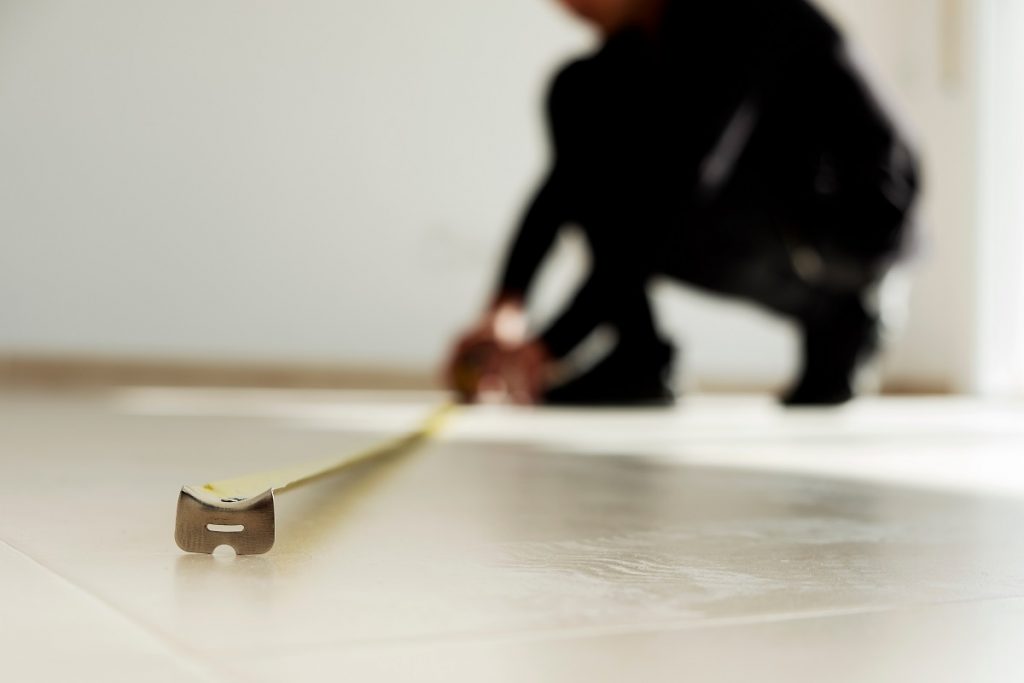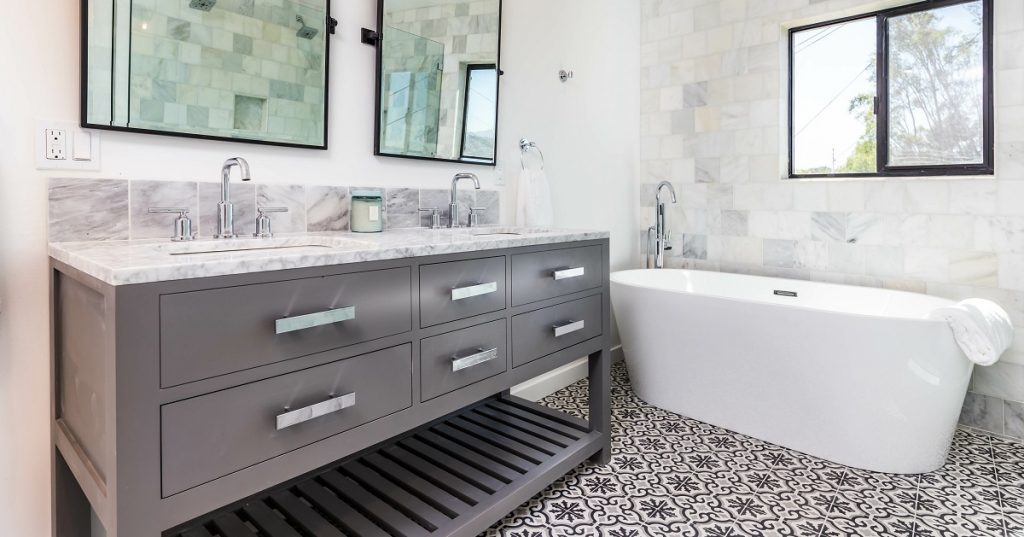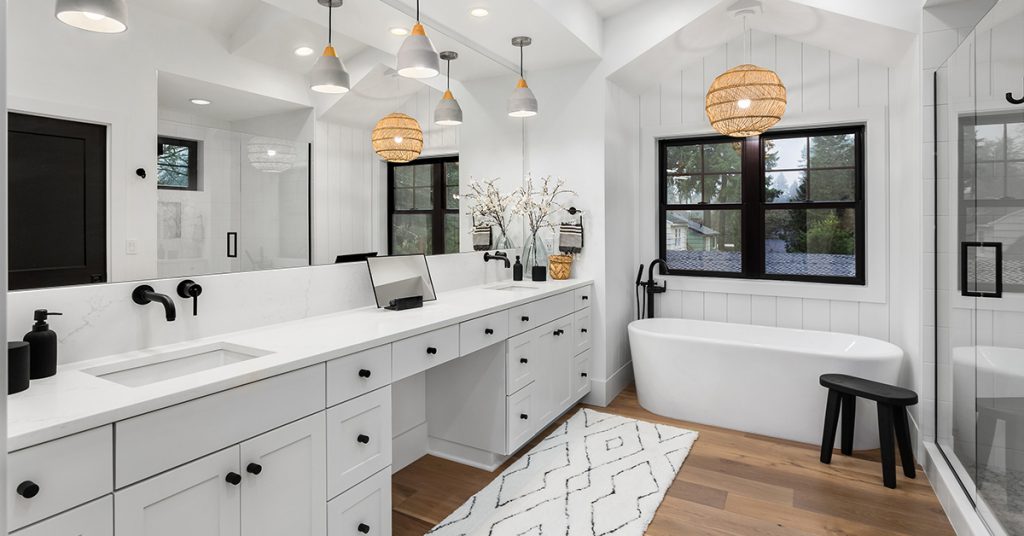The vanity sets the stage for your bathroom design. Getting the right measurements helps you get the right size vanity, which is critical to your comfort and keeping your bathroom workable.
Take a look at our quick guide to help you take the right measurements and select the right vanity for a bathroom that is both functional and beautiful.

Standard Vanity Measurements
There are three measurements you need to pay attention to when measuring for a bathroom vanity: width, height, and depth. Let’s take a deep dive on each of these measurements.
Vanity Width
The width of the vanity is the primary measurement. It’s the one that dictates whether you will have a single or double vanity. It’s the one that will form the foundation of your bathroom space.
The majority of vanities come in measurements from 24”-60”. If you have a very small bathroom, you might go with a vanity as small as 12”. If you have a large bathroom, you might have a vanity of up to 72” or bigger.
Vanity Height
While the width of the vanity is your main concern, it’s a good idea to think about the height as well. Standard height for vanities is 32”. However, many designers favor a taller vanity to increase comfort and accessibility in the bathroom.
Vanities are available in heights up to 36” with 33.5” and 34.5” commonly available. Choose a vanity height that is comfortable for your height.
Vanity Depth
Vanity depth is the final measurement to consider. Available vanity depth ranges from 14” to 26”. What you choose should reflect the size of your bathroom, how much storage space you need, etc.
Standard depth of vanity is around 21”. That’s a good amount of space for your sink and countertop, plus the storage inside the vanity.

How to Measure a Bathroom Vanity
The actual measuring of the vanity might seem pretty straightforward until you are standing there with your tape measure scratching your head.
Vanities don’t have just one set of measurements. For instance, the bottom of the vanity has a toe-kick that has a smaller width and depth than the rest of the vanity. If your vanity came with a countertop, that too has different measurements than the cabinet part of the vanity. Which do you measure?
Always measure the cabinet part of the vanity for the most accurate measurements. It’s good to have measurements that include the countertop too just to ensure everything fits properly. Countertops typically add 1/2 to 1 inch on either side of the vanity width.
Pro Tip
If you are remodeling, take the measurements of your old vanity for reference. If you plan to keep the same vanity footprint, this will save you lots of time. Knowing your old vanity measurements can also help give you a frame of reference if you decide to go bigger or smaller with your vanity in the future.
Note that building codes will come into play when you install a new vanity. For instance, most require at least 15 inches measurement from the center of the toilet to any other fixture. Check your local codes to ensure your vanity meets all requirements.

Measure for Plumbing
Where the plumbing is located is key to getting vanity measurements right. You need a vanity large enough to cover where plumbing comes out of the wall. Once your vanity arrives, you’ll also have to measure where that plumbing will meet the vanity and cut the right spots for access to that plumbing.
Outline the Vanity on the Wall
Start by making pencil or tape marks where the vanity will sit against the wall. That will give you a baseline to measure where the plumbing is and where you’ll need to cut out a solid back vanity.
While you’re at it, it’s a great idea to locate and mark where studs are so you’re ready to attach the vanity to the wall securely.

Measure Plumbing
Measure the distance between the edge of your vanity outline and where the plumbing comes out of the wall. Note both the height and width of the pipes. You’ll also want to measure how large a hole will need to be cut to accommodate the pipes.
Mark on the back of the vanity where the pipes will fall then use a hole saw to cut the right size circle for the plumbing.
Pro Tip
Measurements that you might not think about (but are very important) include things like how far doors will swing. Without these kinds of measurements, you might find that your vanity doors bump into other elements in the bathroom. Provide plenty of clearance for drawers, doors, and walking.
Updating your vanity can be 100% a DIY undertaking with the right knowledge. How to measure the bathroom vanity is easy when you’re equipped with the right tools and knowhow.
Want to learn about measuring for your kitchen cabinets? Read about that here.











 Refundable Samples →
Refundable Samples → 














